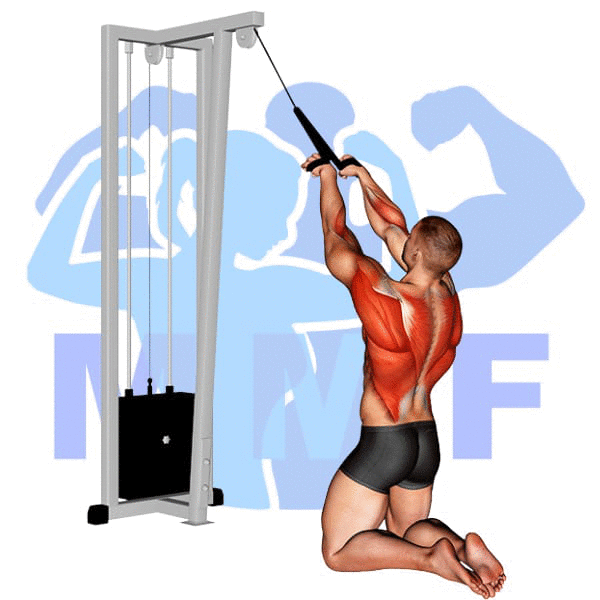Dumbbell exercises allow you to engage more stabilizing muscles and allow for a more extended range of motions to work your muscles more. The dumbbell bent-over row is a great compound exercise that will strengthen your back. In fact, performing rows will likely improve your posture as you increase your traps and lats, pulling your shoulders back and straightening your back.
Dumbbell Bent Over Row Summary
- Primary Muscles Worked: Upper Back (Infraspinatus, Latissimus Dorsi, Rhomboids, Teres Major, and Trapezius)
Other Muscles (Secondary) Worked: Brachialis, Brachioradialis, and Deltoid - Equipment: Dumbbells
- Mechanics Type: Compound
- Force: Pull
- Utility: Auxiliary
How to Properly Perform the Dumbbell Bent Over Rows
Proper Setup
- Grab two dumbbells and stand up straight with your feet at hips width.
- Bend forward at your hips and bend with your knees keeping your arms hanging straight down with the dumbbells over your toes.
- Maintain your back straight and shoulders back.
Executing Dumbbell Bent Over Row Correctly
- Now That you are in the correct starting position.
- Next pull the dumbbells beside your torso and go as far back as you can comfortably. Pull while focusing on bringing your shoulder blades together.
- Finally, lower the weight stopping before your elbow lock.
- And repeat.

Scott Herman On Proper Form For Dumbbell Bent Over Row
The Muscles You Use For Dumbbell Bent Over Rows
Target (Agonist) Muscles
- Infraspinatus
- Latissimus Dorsi
- Rear Deltoids
- Rhomboids
- Teres Major
- Teres Minor
- Trapezius, Middle
- Trapezius, Lower
Synergist Muscles
- Brachialis
- Brachioradialis
- Deltoid, Posterior
- Erector spinae
Dynamic Stabilizers Muscles
- Biceps Brachii
Stabilizer Muscles
- Adductor Magnus
- Erector Spinae
- Hamstrings
- Gluteus Maximus
Antagonist Stabilizers
- Pectoralis
- Triceps, Long Head
Tips for Better Dumbbell Bent Over Row Form
- The further you get your torso parallel, the harder the exercise will be, and the more of your back will be involved.
- Keep your knees bent with the dumbbells over your toes to allow you to maintain your back straight.
- If you find you can’t lower your chest without bending your back, you can reduce the weight. Although if reducing the weight doesn’t help, you must increase your hamstring flexibility.
- Don’t focus on pulling with your hands, instead focus on pulling your elbows to the ceiling. When you focus on pulling with your back, your target muscles will be more engaged.
- Breath into expanding your stomach is keeping your core tight. Proper breathing will give you a strong base.
- Wear a lifting belt if you feel discomfort in your lower back. Although a lifting belt by itself will not prevent injury, you can use the belt to maintain a stronger core. Breath in and press your stomach out against the belt will help you keep a tighter core.
Common Errors While Performing the Bent Over Rows
- Dumbbells Are Too Far Forward. You must keep the dumbbells close to your body and over your toes. If the dumbbells are too far forward, you will be more likely to bend your back to maintain a proper center of gravity.
- Don’t Stand Too Upright. Remember, you are not doing upright rows. Sit your butt down. If you still struggling with this then sit on the edge of a bench an lean forward over your knees. Although this will reduce the benefits of working some of your stabilizing muscles.
- Stop Lifting With Your Hips. If you feel your hips or knees opening and closing while you perform the rows, then you are cheating your back. When you can’t lift the dumbbells without using your hips and legs during each rep you are lifting too much. If you are only cheating on the last rep then you are doing well.
Bent-Over Row Variations
These variations are intended to focus on different subgroups of the same muscles you utilized for dumbbell rows. When you want to get stronger faster you must rotate exercises frequently. Additionally, you shouldn’t perform multiple sets of all of these exercises during the same routine, this will likely lead to overtraining. If you are look to mix up your routines, even more, check out our exercise category. Here are some variations you can rotate in on different back days, or do a few supersets:
Few Other Exercises You Should Do To Compliment Your Rows
When To Add The Dumbbell Bent Over Row To Your Strength Training Routine
Dumbbell bent-over rows should be mixed into your training routine occasionally. If you struggle with performing barbell bent-over rows, start out with dumbbell bent-over rows. Remember to rotate in different exercises frequently. For more back exercises check out 7 of the Best Back Exercises for Bodybuilding and Strength Training.




